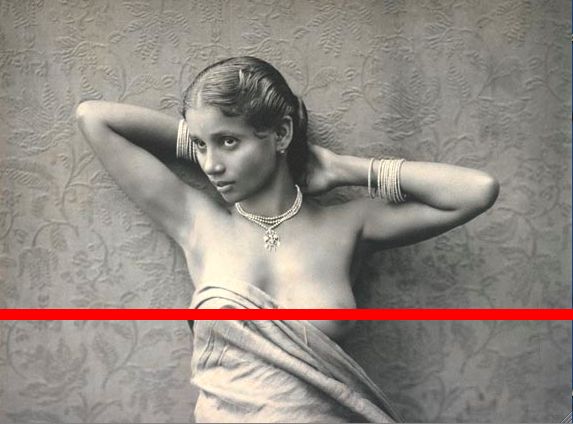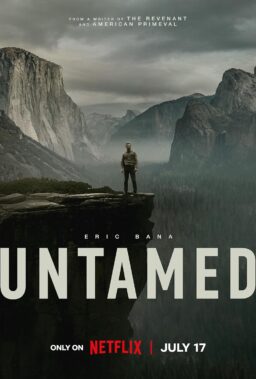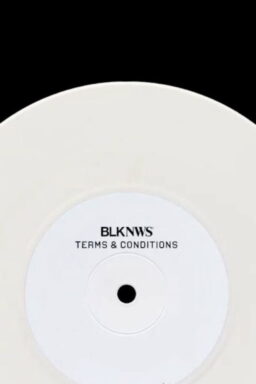One of the richest resources on YouTube is an extraordinary channel named SpokenVerse. It offers 466 readings of great poems in English, from Shakespeare to today. Their reader is a pleasure to listen to. He makes no effort to “perform,” but simply and clearly respects the poetry, with understated emotion when necessary.
Recently one of his poems was taken down by YouTube, apparently because of one female breast more than a century old. SpokenVerse’s passionate followers were outraged, venting on a Google group devoted to the site, but YouTube did not respond or explain itself.
The anonymous reader signs himself “Tom O’Bedlam,” a name taken from a 17th century poem about a lunatic. I believe I recognize his unmistakable voice, but that is for you to decide. In a posting he explained that he received a message from YouTube on April 8 informing him: “The following video(s) from your account have been disabled for violating the YouTube Community Guidelines: The Cinnamon Peeler by Michael Ondaatje.”
Ondaatje is the Booker Prize-winning author of The English Patient. His poem is one of the most erotic I have ever heard, flowing from love and memory, but that’s not why it was taken down. Tom O’Bedlam’s offense was apparently to include, in addition to the written text of the poem a brief shot of a woman with her left breast exposed.
Tom wrote me today:
“The poet Michael Ondaatje who wrote The Cinnamon Peeler was born in Sri Lanka. I was looking for an atmospheric illustration for the poem, which does have erotic undertones and is about native peoples and nudity, when I came upon this page about the Rodian people of Sri Lanka. The picture I used is the last link at the bottom of the page. I was struck by the girl’s beauty and I thought it would add to the mood of the poem. I saw the picture as very old and charming and not pornographic. Some Cynic defined the difference between Art and Pornography — “If you can see things clearly and they are the right colour then it’s pornography.”
The poem was reinstated today. Listen to it, judge for yourself, and return to read of this happy ending. Here it is: http://www.youtube.com/watch?v=w_MWKN1_Uac
You see what I mean about Tom’s eloquence. In my fantasies he reminds me of a wise old English headmaster. His offended readers couldn’t raise a response from YouTube, but I approached them through press channels and quickly heard from a nice man named Ricardo Reyes. “I had every intention of listening to only one. I’m now on my fifth reading,” he wrote me, putting me in touch with another nice man, Scott Rudin, who told me the content had been reinstated and agreed to answer my questions.
Q. Are events like this automated, or are they reviewed by anyone?
A. Here’s how our content monitoring system works:
Every minute, 20 hours of video are uploaded to YouTube. We count on our users (we call them “community members”) to know our Community Guidelines and to flag videos they believe violate the rules. Think of the Community Guidelines as the rules of the road. They are written in casual, straightforward language, and contain mostly what you would expect: no hate speech, incitement to violence, animal abuse, and so on. They also state that pornography and other sexually explicit content is not allowed.
We do, however, have an exception to this rule: “Most nudity is not allowed, particularly if it is in a sexual context. Generally if a video is intended to be sexually provocative, it is less likely to be acceptable for YouTube. There are exceptions for some educational, documentary and scientific content, but only if that is the sole purpose of the video and it is not gratuitously graphic. For example, a documentary on breast cancer would be appropriate, but posting clips out of context from the documentary might not be.
When a video is flagged by a community member, it passes through a prioritization tool that looks at, among other things, possible flesh tones and the reliability of the flagger (based on the accuracy of previous flags). If the tool detects flesh tones, it will bump the video to the top of the queue for manual review. That’s one of the reasons that it’s so hard to find porn on YouTube. Every video that is removed from YouTube has passed through a manual review. Our team of reviewers works 24/7 and in 17 different languages (to be able to evaluate possible hate speech, for example). Once a flagged video is queued for manual review, our reviewers take action quickly, usually in under an hour. We do not prescreen nor do we automatically remove videos for Community Guidelines violations. (Like most websites, we do have spam fighting technology, but that takes place prior to the process I am describing.)
Q. In this case, the offending content may have been bare breasts in a fine art photograph. Is such an occurrence considered pornography?
A. Nudity in an artistic context usually would fall into the educational, documentary or scientific exception I describe above. I say usually, because every decision we make about flagged videos is based on context. We try to understand the uploader’s intention in cases of ambiguity. What are the tags the uploader has placed on the video? What’s the title? How is the video described? What is the focal point of the video? That said, without commenting on the specifics of a particular video, I would say that it would be unusual to consider bare breasts in a painting pornography.
Q. The YouTube ruling has been protested. Do you have a listening procedure to monitor such feedback?
A. We certainly listen to our community in many ways. Flagging is the best and most obvious example, since that is a direct communication between the community and us. I think you’re asking if we have a formal protest procedure for the public to write us to express its displeasure, and the answer is no, mostly because we have seen is that we don’t need one. People are not shy about sending us emails when they disagree with a decision we have made, and we are always watching the media for trends. In that sense, we are always listening.
Q. In this case, the channel consists of 466 readings of classic and modern English poetry, created especially for You Tube. Did YouTube have a way of knowing that?
A. We can certainly see all of the videos associated with any one channel.
Q. Users are concerned that the reader may not continue to offer readings. Do you have any plans to apologize?
A. Sometimes, in our effort to keep inappropriate content off the site, we mistakenly remove a video that should remain on the site. When such a mistake is brought to our attention, we reinstate the video as quickly as we can.
When The Cinnamon Peeler was taken down, Tom informed his subscribers he would be post no new poems. Now that it is back, as one of his subscribers, I’m awaiting a new posting.
By the way, I prefer Tom O’Bedlam’s reading to Ondaatje’s own, here: http://www.youtube.com/watch?v=3A2ekfA8Kn8












